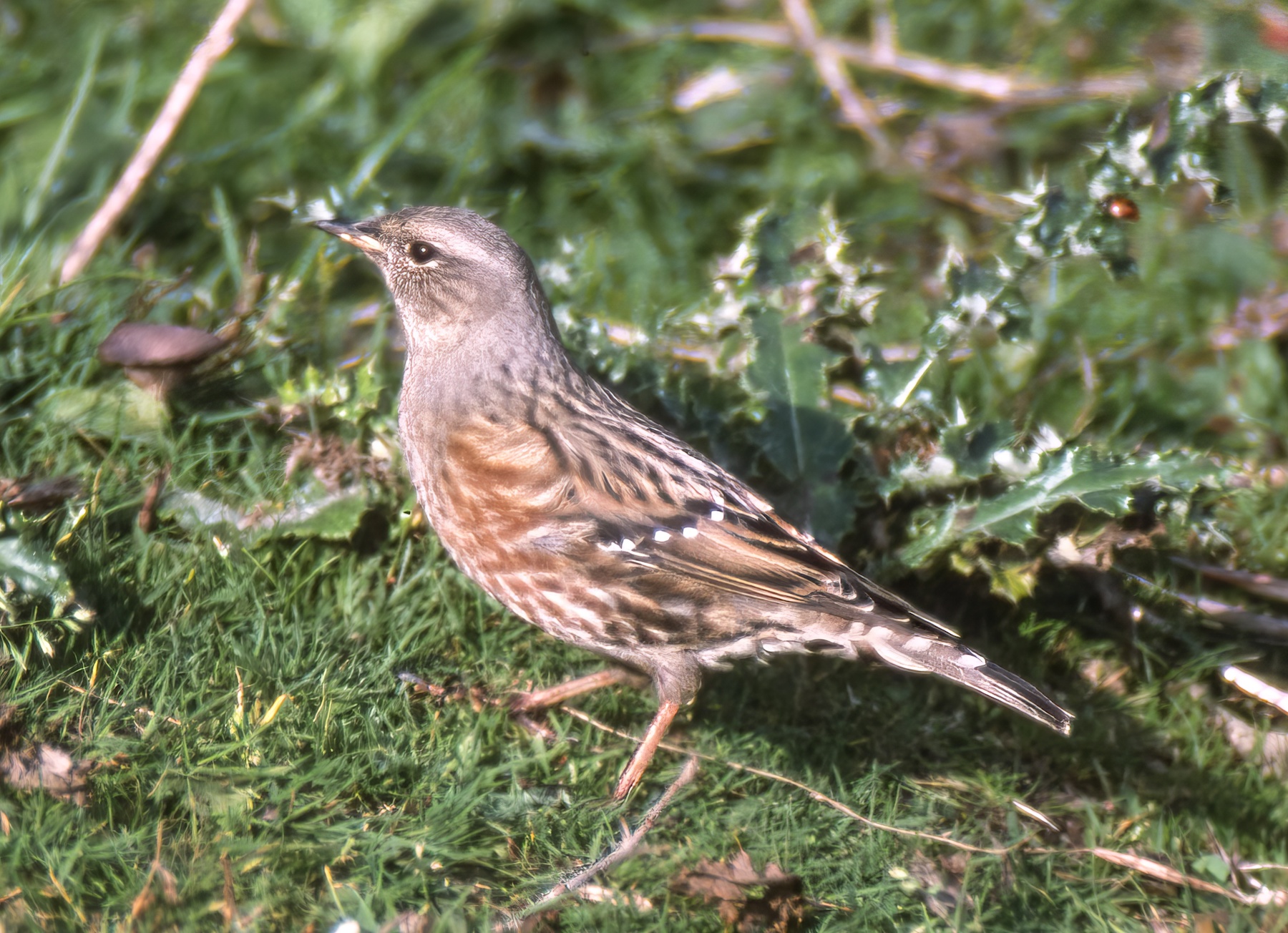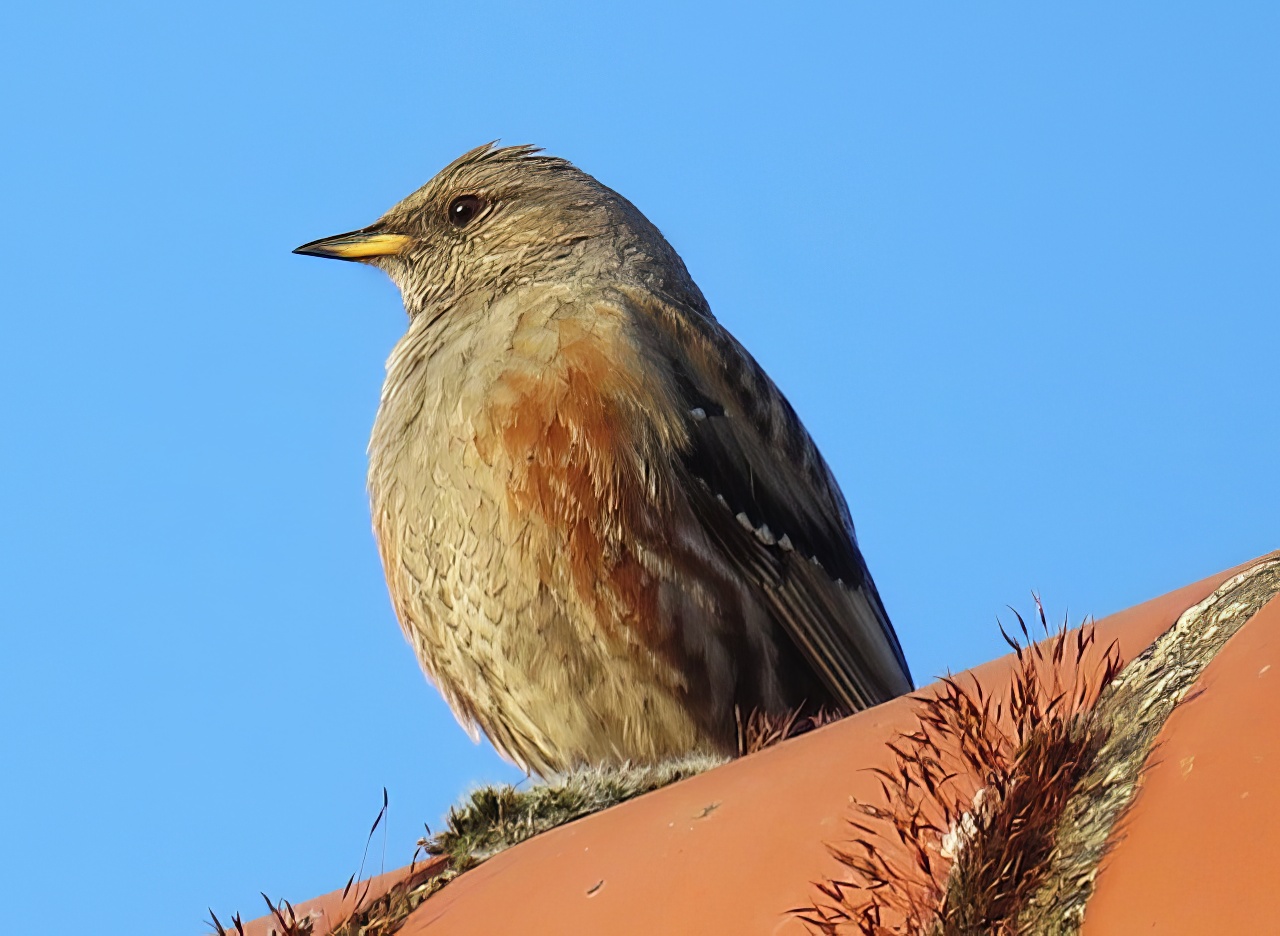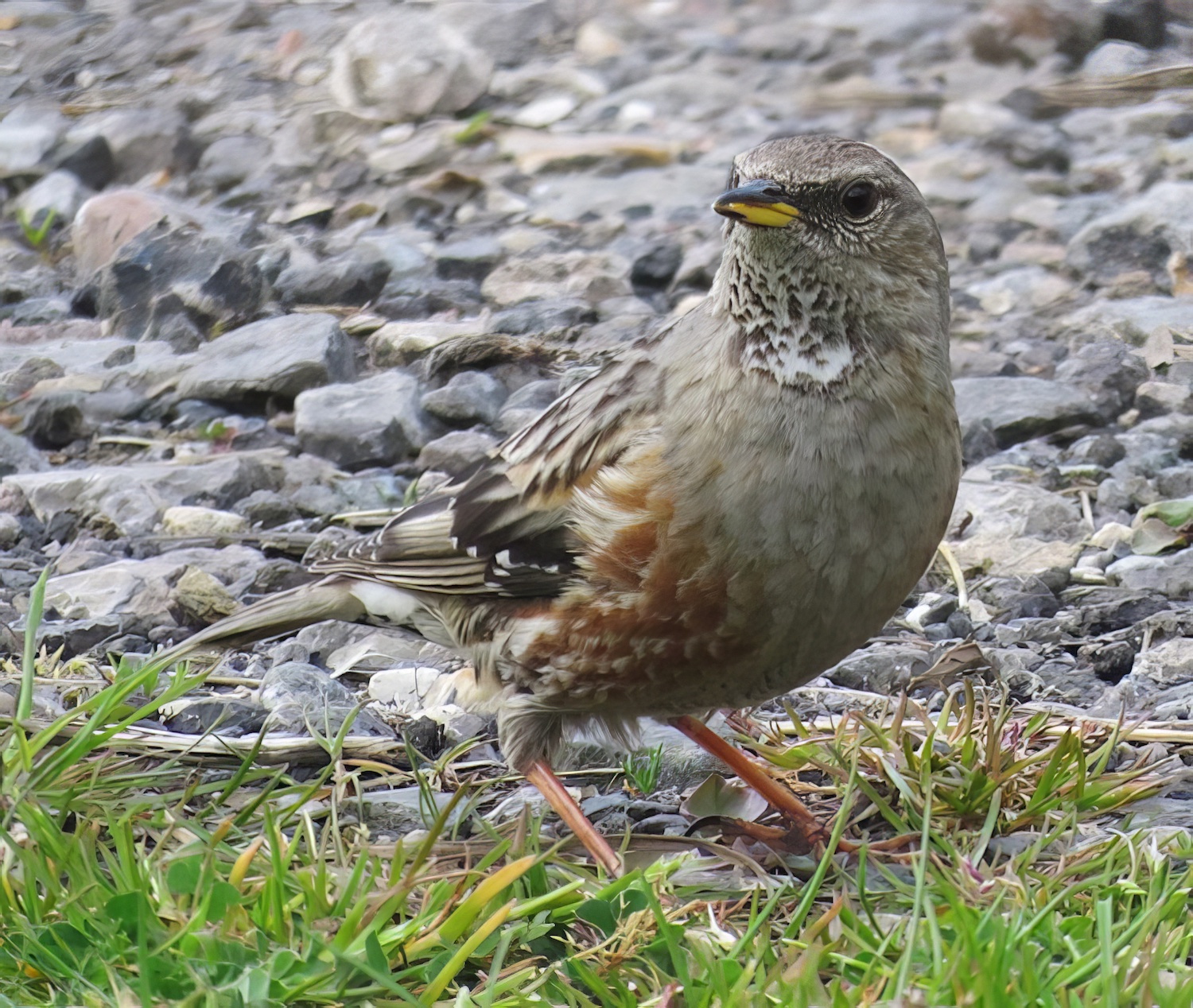Alpine Accentor Prunella collaris



The first Alpine Accentor for the county arrived in November 1994 and stayed for five days delighting several hundred travelling birders. It frequented the short grassy track, south of Rimac, separating the saltmarsh from the dense dune buckthorn, a far cry from its usual mountain terrain. The second was found at the bird feeders at Sykes Farm, Gibraltar Point on the late afternoon of May 7th 2016 and fed at times on the bird table at the Sykes Farm office. It disappointed many in disappearing overnight. As with the first record, the bird turned up in coastal habitat never normally associated with the species although vagrants of all species often turn up in the least expected of places.
BBRC statistics show that the 1994 record was only the 11th for the UK since their baseline date of 1950 and was the only one of that year. The 2016 record was one of three to arrive in the UK that spring and together these three constituted the 17th-20th records for the UK since 1950. The species remains a true vagrant and averages one record every 3 years in the UK.
| Site | First date | Last date | Count | Notes |
| Saltfleetby-Theddlethorpe NNR | 14/11/1994 | 18/11/1994 | 1 | Adult |
| Gibraltar Point NNR | 07/05/2016 | - | 1 | Adult |
Alpine Accentor at Rimac (Saltfleetby-Theddlethorpe Dunes NNR), November 14th-18th 1994, first county record.
by Paul Troake
Note: this account appeared in Lincolnshire Bird Report 1994. The BBRC report for 1994 noted that there had now been singles in consecutive years following a two-year absence. There were two records in 1990 which were preceded by an 11-year absence. This is only the third autumn record since 1958, and was the 11th record since 1950 at the time.
On Monday November 14th, Amanda Burrows and I chose Rimac as our birding venue, prompted by a call I had received the previous day concerning a possible Dusky Warbler there. We did not venture out until the afternoon, and it was about 13.30 h when we were almost at the pillbox where the warbler had been seen. At this a bird flew across the track and settled out of view on the edge of the saltmarsh. This stopped us in our tracks, as it had pale brown upperparts with heavy streaking, reminiscent of a Whinchat, although clearly larger with jizz unlike any British bird. Very intrigued, we edged forward in anticipation of a decent view. Fortunately, it soon hopped out onto the short-turfed track, and after a quick look with the binoculars and close scrutiny through my ‘scope, we were hit with the sight of a large Accentor. Even at first glance it was obviously not just a Dunnock. Indeed, it had ‘rare’ all over it! It took a short while for its various features to sink in – in particular the yellowish base to its otherwise dark bill, the blackish-mottled light grey throat patch, the rich orange-red tone to the lower breast and flanks, and the conspicuous white spots to the tips of the greater coverts. These and other features clearly added up its being a pristine Alpine Accentor, previously unrecorded in Lincolnshire. We figured that surely someone else must have seen it before us, and we were half expecting to see a few twitchers arriving at any time. It soon transpired that this was not the case, abd after years of searching for the big one we had at last been blessed, leaving me with a sense of unreality for about two days! The bird appeared to be very settled; intent on actively feeding and I released the news that afternoon.
At dawn the next day a small crown had gathered at Rimac. Fortunately for all, the bird was still present, and it performed obligingly for about 250 watchers that day. A collection onsite raised around £127 towards the reserve and the Lincolnshire Trust for Nature Conservation. A steady flow of twitchers continued over subsequent days until 18th, when it was last sighted briefly, early in the morning. On the afternoon of 17th November, the bird was flushed by some passing horse riders and apart from the brief report on 18th it was not seen again despite some extensive searching. Throughout its stay the bird remained loyal to the long strip of short grass along the track separating the saltmarsh from a dense belt of sea buckthorn scrub, a far cry from the mountainous terrain way above sea level with which this species is normally associated. On the day of discovery at least, this dense scrub belt provided shelter from the moderate south-westerly winds, perhaps the reason for the bird settling there. Birders had crossed this area that morning and the previous day so it may have been a fresh arrival; alternatively, it may have been pushed by the winds from a more exposed area. In any case, the bird was certainly much appreciated by all who saw it.
In a British context, this constitutes the 39th British record, although only the fourth since 1978. Of the ten records since 1958, seven have arrived in spring between April 8th and June 27th. The Rimac bird ties in with the other late season birds which arrived on October 20th, 1997 and November 4th, 1990. Much to my disappointment I never did see the possible Dusky Warbler!
Reference
Troake, P. (undated) Alpine Accentor at Rimac, November 14th-18th. Lincolnshire Bird Report 1994, 73.
(Account prepared October 2017; includes all records up to 2016)

